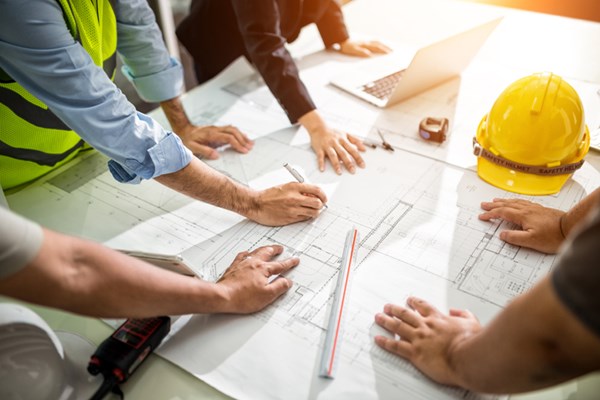
“Teamwork is the ability to work together toward a common vision.” -Andrew Carnegie
Throughout history, construction has always followed the Design-Bid-Build delivery method. This straightforward, 3-step process first involves an owner hiring an architect to design a building, followed by a bidding process that results in a general contractor – typically the lowest bidder – being selected to build the project. Finally, the winning contractor takes the architect’s design drawings and begins construction.
Recent advances in technology have enabled the construction industry to rethink this process, particularly in regard to complex projects. In such scenarios, a process involving a more collaborative approach between the architect and trade contractors during the design phase can reduce costs and minimize construction phase-related issues.
Design-Assist Employs Teamwork to Resolve Issues Before Construction Starts
At Cleveland Construction, we see real advantages in using the Design-Assist delivery method for more complex projects. We like an interdisciplinary collaboration that affords early-on in the development of the critical design and construction documents. It allows major trade contractors to be included as part of the preconstruction team where they can provide feedback to the architect, the engineer, and the construction manager. Knowledge from trade contractors brings value to the design process, thereby resolving constructability issues before construction starts. Read more on how Design-Assist.
Design-Assist Trade Contractors Are Selected Early
Implementation of the Design-Assist delivery method for a project first requires the owner and the project team to agree that this process is the best approach to follow. Then, contractors from major trades are chosen to be a part of the build team. This selection process must be completed early in the design and preconstruction phase and should be based on values such as qualifications, experience, past performance, and fees.
The Team Must Closely Follow the Design-Assist Plan
The Design-Assist plan requires all project stakeholders to work cohesively and collaboratively. Team roles and responsibilities must be clearly defined. The design team should rely on trade contractors for input on constructability, maintainability, and cost estimation. As construction begins, trade contractors can provide real-time feedback that allows the design team to accurately track the project’s status as it relates to the overall budget and schedule.
Transitioning Responsibilities Are Detailed in the Design-Assist Plan
At a certain point specified in the Design-Assist plan, responsibility for the model development should transition from the design team to the trade contractors. Generally, that happens when all major decisions have been made, the design drawings are complete, and the construction documents are at least 30%-50% complete.
The Design Team Will Handle Permits and Seal the Documents
Following the transition of project oversight to the trade contractors, the design team retains responsibility for key system and assembly design decisions and typically handles sealing the documents for permit application. Technology software (such as Revit) offers a common platform through which trade contractors can continue to efficiently provide updates to the model to improve space planning, increase the dimensional accuracy of building components, and enable the use of prefabricated components.
In summary, when tackling complex building projects, the Design-Assist delivery method utilizes the “two heads are better than one” approach by enlisting major trade contractors early in the design stage. Their knowledge and expertise enhance the overall building experience while minimizing inefficiencies and budget overruns.